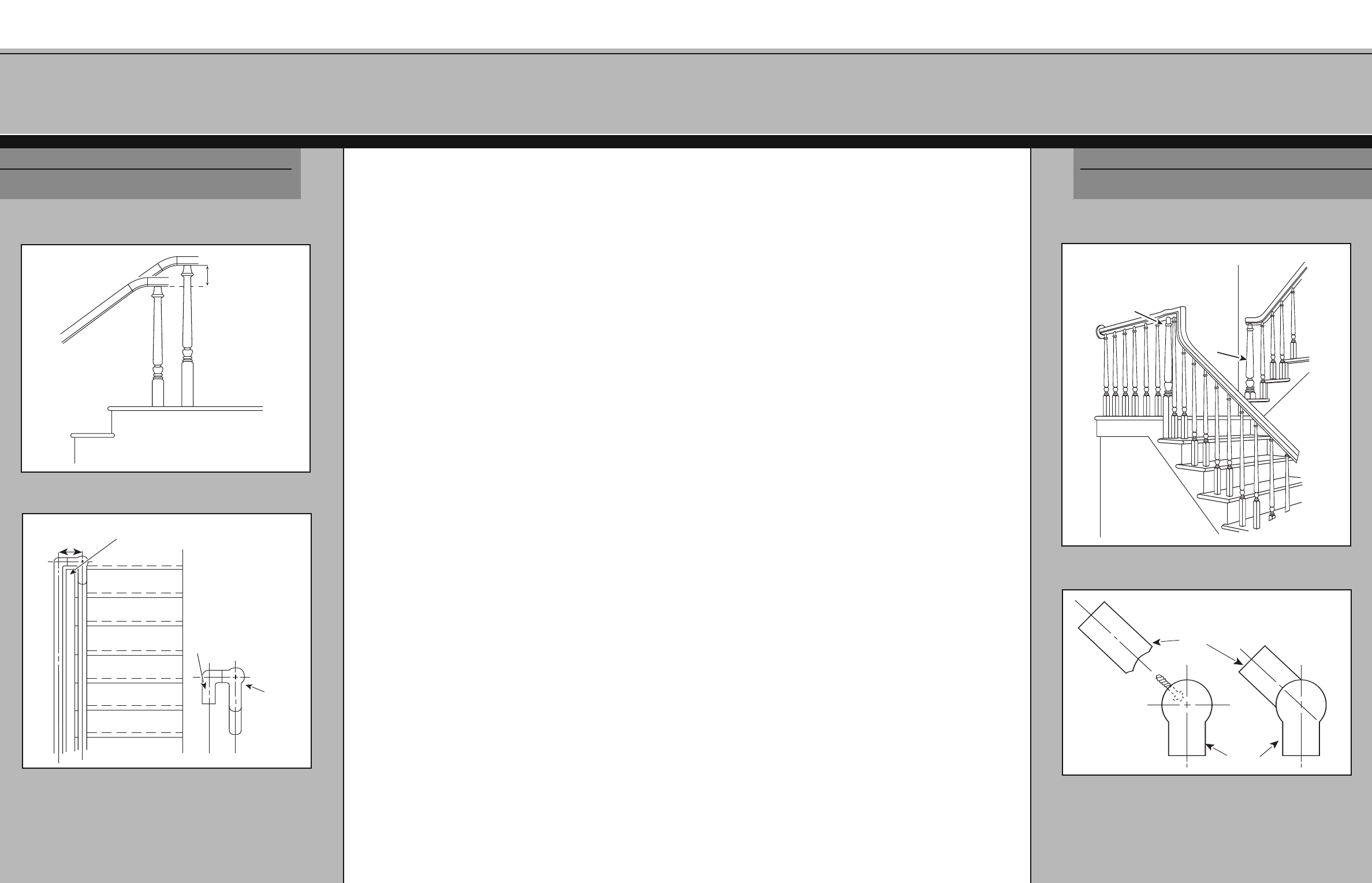Installation Guide

52
PR
OBLEM
:
A section of level rail is needed on an intermediate landing.
SOLUTION:
(See Fig. A2-5) Newels “A” and “B” should be the same
height. The balusters on the landing may need to be longer,
and a 2-rise gooseneck may be required. Newel “B” should
use a starting easing.
'
A'
(balcony newel)
'
B'
(starting
n
ewel)
Newels 'A' and 'B' must
b
e the same height
from landing to bottom of rail
T ROUBLESHOOTING
R EFERENCE
APPENDIX 2
FIG. A2-5 - Use of level rail on a landing
5
1
PR
OBLEM
:
Instead of a standard gooseneck, an overeasing is desired at
the balcony.
SOLUTION:
The landing/balcon
y newel height must be adjusted to
maintain the proper balcony handrail height. Note: Newel
height must increase the further from the stair the newel is
placed (see Fig. A2-3).
N
ewel height must be
adjusted to maintain proper
b
alcony handrail height
Note: Newel height must increase
when it is moved away from the stairs.
APPENDIX 2
T ROUBLESHOOTING
R EFERENCE
FIG. A2-3 - Use of an overeasing at the balcony
Center-to-center
distance
Well hole
Replace the horseshoe
gooseneck with a level
quarterturn and a standard
90º balcony goosen eck
Lev el
quarterturn
90º
gooseneck
FIG. A2-4 - Alternate method to achieve
required well hole center-to-center distance
PROBLEM:
The hor
seshoe gooseneck fitting does not fit the well hole
center-to-center distance.
SOLUTION:
By adding a level quarter-turn to a standard 90° balcony
gooseneck, the center-to-center distance can be achieved
(see Fig. A2-4).
Coped
end
Opening
cap
FIG.
A2-6 -
Achie
ving different le
vel turn angle
PR
OBLEM
:
The le
v
el turn angle is different than the quarterturn
cap angle.
SOL
UTION
:
Use an opening cap wit
h a coped end att
ac
hed using a r
ail
bolt t
o ac
hie
ve the desired angle (see Fig. A2-6). If the level
turn angle is 45°, use a 7021A or 7221A.










